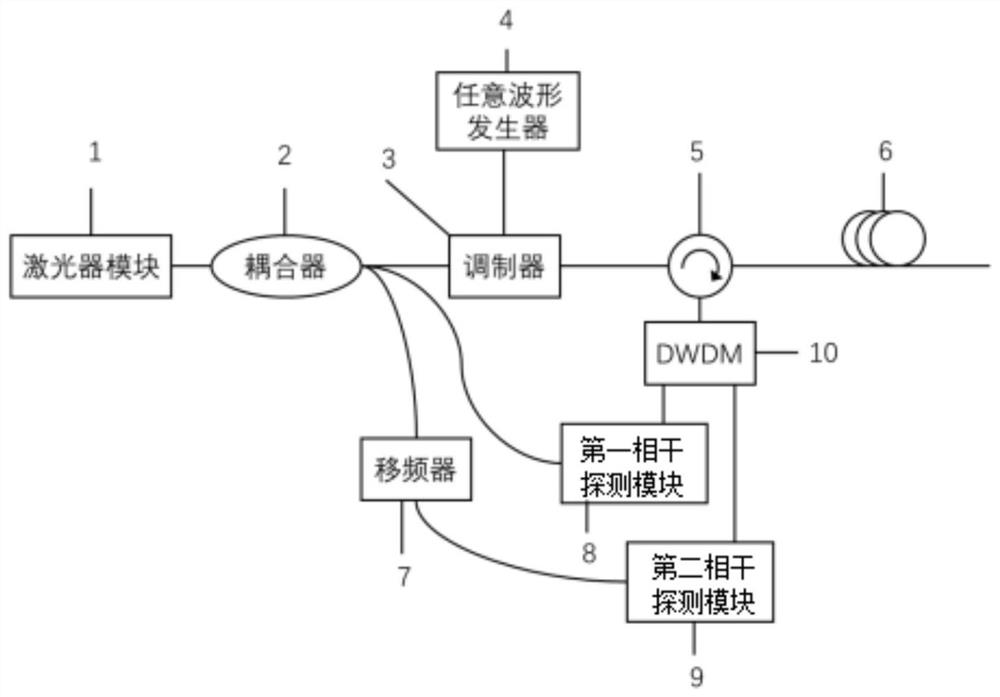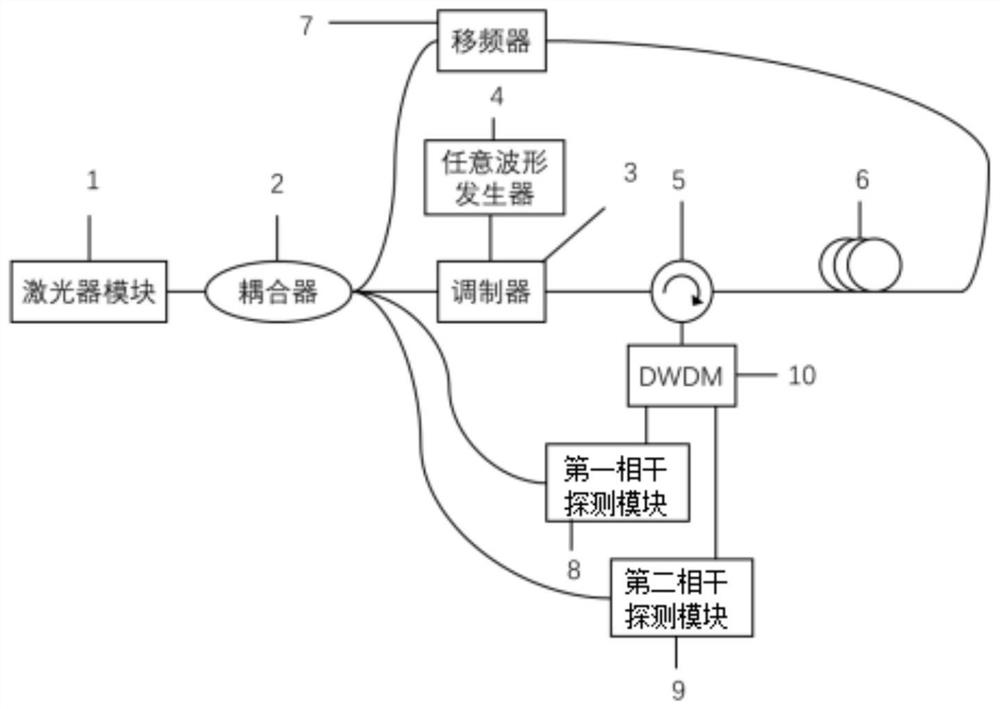Distributed temperature strain sensing method based on sub-pulse extraction algorithm
A temperature-strain and sensing method technology, applied in the direction of converting sensor output, using optical devices to transmit sensing components, complex mathematical operations, etc., can solve problems such as strain and temperature cross-sensitivity, achieve temperature and strain, and avoid frequency sweeping The effect of the process
- Summary
- Abstract
- Description
- Claims
- Application Information
AI Technical Summary
Problems solved by technology
Method used
Image
Examples
Embodiment 1
[0030] Such as figure 1 As shown, this embodiment provides a distributed temperature and strain sensing system based on optical time domain reflectometer. The measurement system structure includes: laser module 1, coupler 2, modulator module 3, arbitrary waveform generator 4, ring device 5, sensing fiber 6, frequency shifter 7, first coherent detection module 8, second coherent detection module 9, dense wavelength division multiplexer (DWDM) 10.
[0031] Specifically, in Embodiment 1, the continuous laser output from the laser module 1 is connected to the coupler 2 and divided into three parts, one of which is directly connected to the first coherent detection module 8 as the local oscillator of Rayleigh scattering coherent detection, and one After a frequency shift close to the Brillouin frequency shift, one part is connected to the second coherent detection module 9 as a local oscillator; the other part passes through the modulator 3 to generate a detection signal in a large...
Embodiment 2
[0045]This embodiment proposes a distributed temperature strain sensing system based on optical time domain reflectometer, specifically as follows:
[0046] Such as image 3 As shown, a distributed temperature and strain sensing system based on optical time domain analyzer, the measurement system structure includes: laser module 1, coupler 2, modulator module 3, arbitrary waveform generator 4, circulator 5, sensor An optical fiber 6 , a frequency shifter 7 , a first coherent detection module 8 , a second coherent detection module 9 , and a dense wavelength division multiplexer 10 .
[0047] Specifically, in Embodiment 2, the continuous laser output from the laser module 1 is connected to the coupler 2 and is divided into three parts, one of which is directly connected to the coherent detection module 8 as the local oscillator of Rayleigh scattering coherent detection, and one part is connected to the coherent detection module 8 through After a frequency shift close to the Bri...
PUM
 Login to View More
Login to View More Abstract
Description
Claims
Application Information
 Login to View More
Login to View More - R&D
- Intellectual Property
- Life Sciences
- Materials
- Tech Scout
- Unparalleled Data Quality
- Higher Quality Content
- 60% Fewer Hallucinations
Browse by: Latest US Patents, China's latest patents, Technical Efficacy Thesaurus, Application Domain, Technology Topic, Popular Technical Reports.
© 2025 PatSnap. All rights reserved.Legal|Privacy policy|Modern Slavery Act Transparency Statement|Sitemap|About US| Contact US: help@patsnap.com



